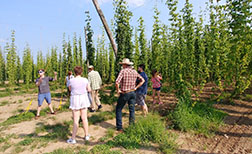By Eric Freedman

Eric Freedman
Ask environmental journalists what news stories have changed the world and you’ll provoke a slew of thoughtful – and sometimes conflicting replies.
That’s what I found after Reporters without Borders interviewed me for a piece on environmental journalism. One of their questions: “What are the most important environmental investigations in modern history, the ones that ‘changed the world’”? My immediate thoughts:
The Flint water crisis because it involved a massive public environmental health threat to thousands of vulnerable people, scientific questions, environmental justice and government misuse of power while triggering similar journalistic and government investigations of a dangerous weakness (lead pipes) in water systems across the U.S. and beyond.
Rachel Carson’s landmark book Silent Spring, which gave a major boost to environmentalism and environmental awareness internationally. I know she was a biologist, but the question said “environmental investigations.” Continue reading

